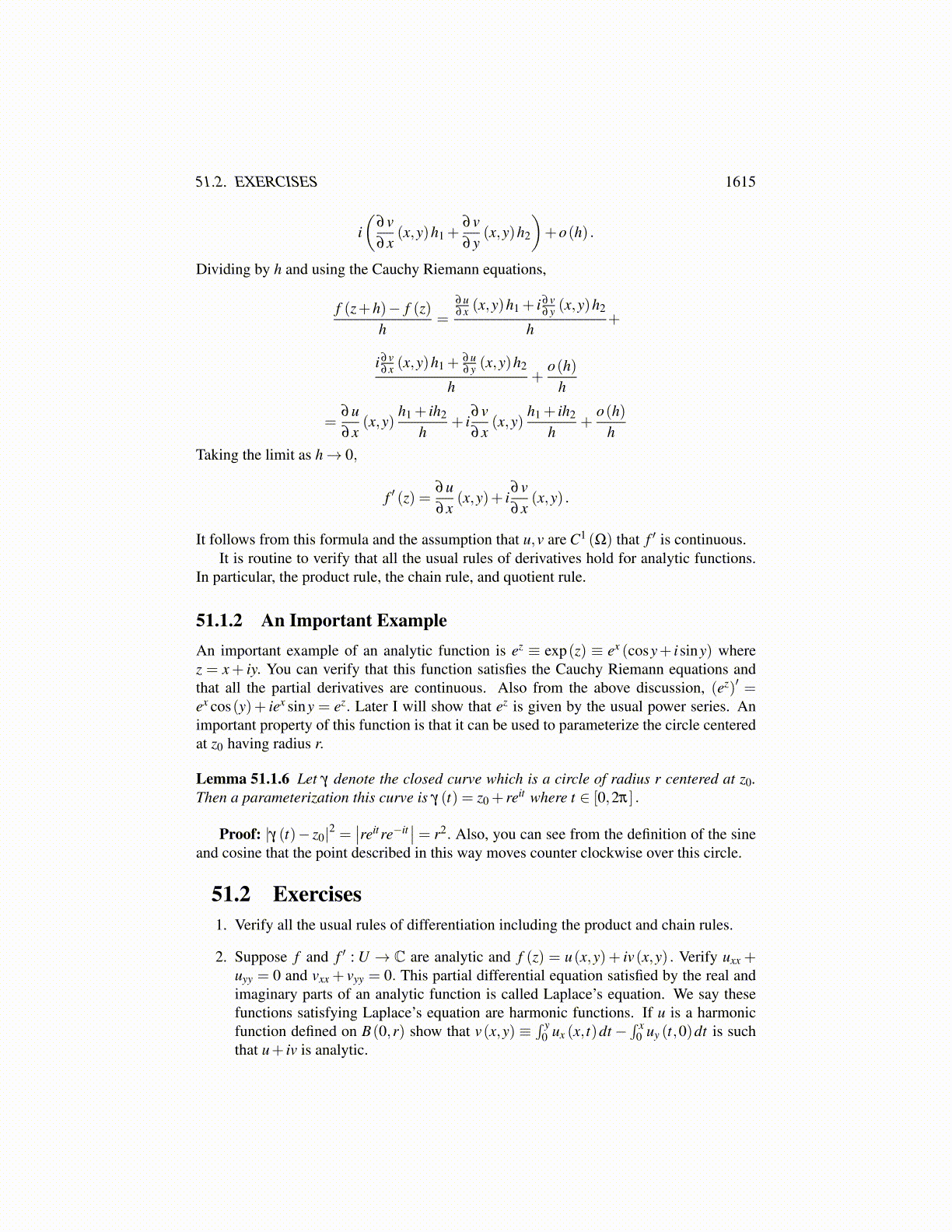
51.1. ANALYTIC FUNCTIONS 1615
r1 < r < R. Then letting |z−a|< r1 and h < r− r1,∣∣∣∣∣∣∣∣ f (z+h)− f (z)h
−g(z)∣∣∣∣∣∣∣∣
≤∞
∑k=2||ak||
∣∣∣∣∣ (z+h−a)k− (z−a)k
h− k (z−a)k−1
∣∣∣∣∣≤
∞
∑k=2||ak||
∣∣∣∣∣1h(
k
∑i=0
(ki
)(z−a)k−i hi− (z−a)k
)− k (z−a)k−1
∣∣∣∣∣=
∞
∑k=2||ak||
∣∣∣∣∣1h(
k
∑i=1
(ki
)(z−a)k−i hi
)− k (z−a)k−1
∣∣∣∣∣≤
∞
∑k=2||ak||
∣∣∣∣∣(
k
∑i=2
(ki
)(z−a)k−i hi−1
)∣∣∣∣∣≤ |h|
∞
∑k=2||ak||
(k−2
∑i=0
(k
i+2
)|z−a|k−2−i |h|i
)
= |h|∞
∑k=2||ak||
(k−2
∑i=0
(k−2
i
)k (k−1)
(i+2)(i+1)|z−a|k−2−i |h|i
)
≤ |h|∞
∑k=2||ak||
k (k−1)2
(k−2
∑i=0
(k−2
i
)|z−a|k−2−i |h|i
)
= |h|∞
∑k=2||ak||
k (k−1)2
(|z−a|+ |h|)k−2 < |h|∞
∑k=2||ak||
k (k−1)2
rk−2.
Then
lim supk→∞
(||ak||
k (k−1)2
rk−2)1/k
= ρr < 1
and so ∣∣∣∣∣∣∣∣ f (z+h)− f (z)h
−g(z)∣∣∣∣∣∣∣∣≤C |h| .
therefore, g(z) = f ′ (z) . Now by Theorem 51.1.3 it also follows that f ′ is continuous. Sincer1 < R was arbitrary, this shows that f ′ (z) is given by the differentiated series above for|z−a| < R. Now a repeat of the argument shows all the derivatives of f exist and arecontinuous on B(a,R).
51.1.1 Cauchy Riemann EquationsNext consider the very important Cauchy Riemann equations which give conditions underwhich complex valued functions of a complex variable are analytic.
Theorem 51.1.5 Let Ω be an open subset of C and let f : Ω→ C be a function, such thatfor z = x+ iy ∈Ω,
f (z) = u(x,y)+ iv(x,y) .